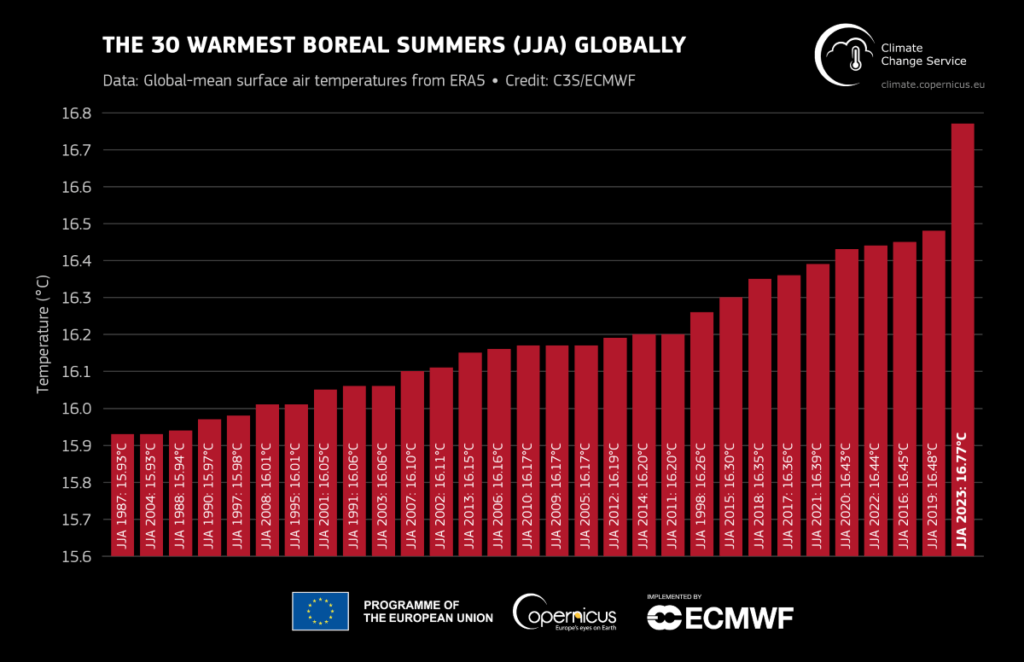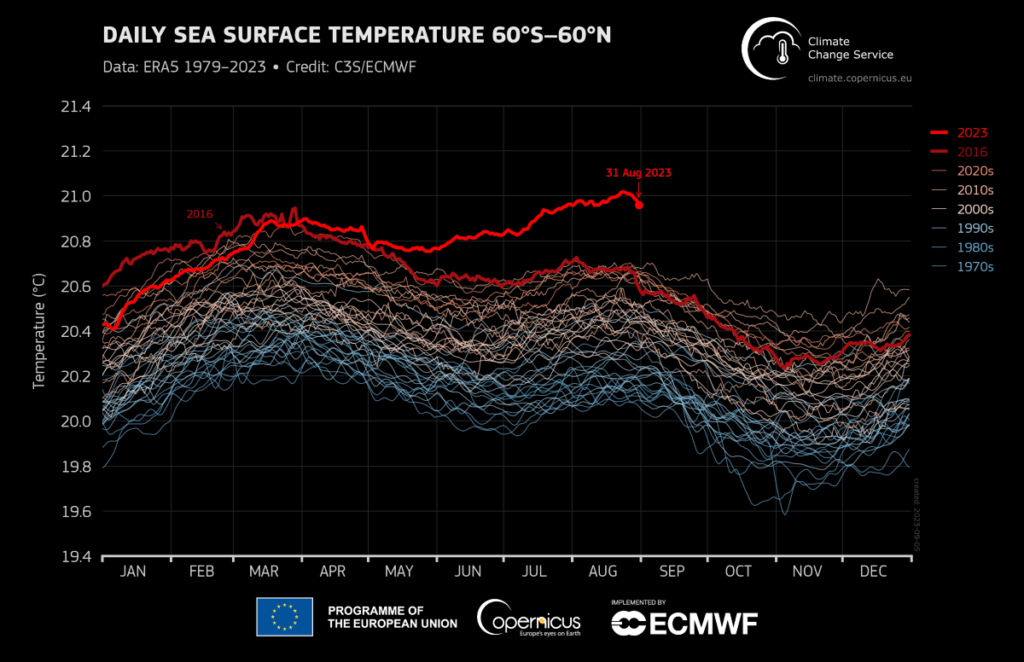credit: Sung Yoon Jo
In a sobering announcement, the World Meteorological Organization (WMO) declared on September 6, 2023, that Earth has just witnessed its hottest three months on record. This revelation is a stark reminder of the pressing issue of global warming and its profound impact on our planet.
A Scorching August hottest month.
August, in particular, stood out as a hottest month . It recorded a staggering 2.7 degrees Fahrenheit (1.5 degrees Celsius) higher than the preindustrial average for the period between 1850 and 1900. This made August 2023 not only the hottest August ever recorded but also the second-hottest month in history, trailing only behind July of the same year.
2023: The Second Hottest Year.
Adding to the gravity of the situation, 2023 is now the second hottest year on record, second only to 2016. It’s worth noting that the scorching temperatures in 2016 were partly influenced by a powerful El Niño event. Alarmingly, scientists are warning that we are currently entering another El Niño year, which could exacerbate the heat further.

The Impact on Our Hemisphere.
Petteri Taalas, the Secretary-General of the World Meteorological Organization, did not mince words in describing the situation. He pointed out that the Northern Hemisphere experienced an extreme summer characterized by relentless heatwaves. These heatwaves triggered devastating wildfires, posed health risks, disrupted daily life, and exacted a lasting toll on the environment.
In the Southern Hemisphere, the situation was equally alarming. Antarctic sea ice extent reached unprecedented levels, breaking all previous records. Furthermore, global sea surface temperatures reached new highs. What’s unsettling is that this is all happening before we’ve even witnessed the full warming effect of the El Niño event, which typically takes place in the second year following its development.

Oceans and Poles Are Heating Up.
The warming trend wasn’t confined to the Earth’s surface alone; it extended to our oceans and polar regions. The WMO report highlights that August registered the highest global monthly average sea surface temperatures on record, with temperatures surpassing the previous record set in March 2016. Remarkably, every single day in August exceeded this last record.
In the Antarctic, sea ice extent it remained at a historically low level for that time of year, measuring 12% below the average. This represents the most significant negative anomaly for August since satellite observations began in the late 1970s. In the Arctic, although sea ice extent was 10% below average, it remained above the record minimum observed in August 2012.

The Reality of Climate Breakdown.
The statements from global leaders and climate experts are unambiguous in their warnings. UN Secretary-General António Guterres emphasized the gravity of the situation, characterizing the past summer as “the hottest on record.” He stressed that climate breakdown has already begun and urged leaders to take swift and decisive action to combat this crisis.
Carlo Buontempo, Director of the Copernicus Climate Change Service, ECMWF, echoed these concerns. He noted that the year 2023, up to this point, is the second warmest year, very closely trailing 2016. August 2023 was estimated to be approximately 2.7 degrees Fahrenheit (1.5 degrees Celsius) warmer than pre-industrial levels. This persistence of record-breaking conditions and their far-reaching impacts underscore the urgency of addressing climate change.
The Bottom Line.
The message from the World Meteorological Organization is crystal clear: the last three months were the hottest on record for Earth. This serves as an urgent call to action for leaders, policymakers, and individuals worldwide to confront the escalating climate crisis and work collectively to mitigate its devastating effects. The time for decisive climate solutions is now, and there is no time to waste.

[…] Atmospheric Temperature Patterns: If the sun were responsible for global warming, we would expect to see warming occurring across all layers of […]